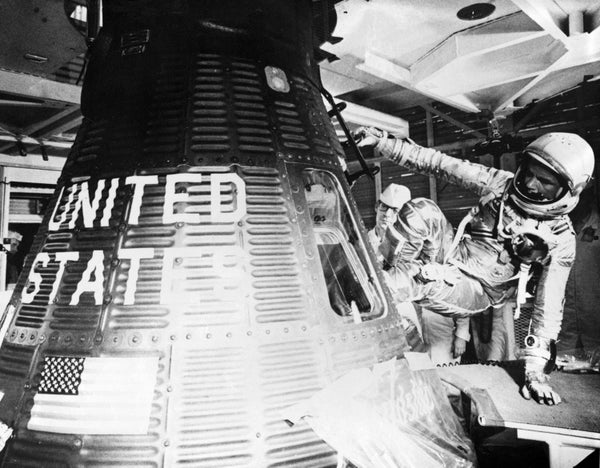This article was published in Scientific American’s former blog network and reflects the views of the author, not necessarily those of Scientific American
Getting a sense of scale on historical events can be hard. That’s why factoids about Cleopatra being born closer to the creation of smart phones than the building of the Great Pyramids feel so striking. But the same thing can happen to events that don’t feel quite as old. Consider this statement: The Animals released their recording of “House of the Rising Sun” in 1964, and The Fresh Prince of Bel Air debuted in 1990. Does that sound reasonable? How about this: The Animals first released “House of the Rising Sun” 54 years ago, and The Fresh Prince of Bel-Air first aired 28 years ago. Did that feel a bit different? What about this one: The first episode of The Fresh Prince of Bel-Air came out closer to the release of The Animals’ “House of the Rising Sun” than to today.
Can changing the language used to describe different events change the way we perceive the passage of time? It has certainly made me hesitate and reconsider. The idea came up when I was reading about the first moon landing. First of all, how long ago did Neil Armstrong first walk on the Moon? I will give you two sets of answers to pick from:
29 years ago
39 years ago
49 years ago
59 years ago
On supporting science journalism
If you're enjoying this article, consider supporting our award-winning journalism by subscribing. By purchasing a subscription you are helping to ensure the future of impactful stories about the discoveries and ideas shaping our world today.
OR
1989
1979
1969
1959
The answer is C in both cases, but accepting that the Apollo 11 mission took place in 1969 is easier for me to process than the fact that almost half a century has passed. But the question that really stopped me in my tracks was this one: In what year did the LAST person walk on the Moon?
1991
1983
1979
1972
The answer, shockingly, is D. Maybe some of you picked that, but if I had posed the question as “How many years passed between the first and last walk on the Moon?” would you have picked the option that said only three years? I knew that the space race and the Apollo era was a wild and rapid sprint to the Moon. But I had no idea that so soon after humans made that epic journey, they stopped and never went back again.
I don’t think that the 1972 date for the last moonwalk would have been so striking if the first walk in 1969 had not been so fresh in my mind. After wondering what other discoveries and advances might have unexpected timelines of their own, I put together a series of games. Even though these might take longer than the 45 seconds that it would have taken to just read a list of dates and events, hopefully the games will give you chance to do more than say, “Oh,” and move on. Answers can be found at the bottom of the post. Enjoy.
1. Match the events with the years in which they occurred:
A) Origin of the Big Bang Theory U) 1675
B) Saran wrap first used for food V) 1888
C) First microorganisms observed by a microscope W) 1927
D) Discovery of liquid crystals X) 1949
E) Patent of hook & loop technology (like Velcro) Y) 1955
F) Birth of first baby conceived by IVF Z) 1978
2. The first seatbelts were included in Volvo cars in 1959. How many years do you think passed before seatbelts were required in all new American vehicles?
5 years
9 years
15 years
21 years
3. How many more years before all US states had laws about the use of car seats?
7 years
12 years
17 years
24 years
4. Match the events with the years in which they occurred:
A) First available consumer microwave oven V) 1903
B) First expedition to reach the South Pole W) 1911
C) John Glenn’s first orbit around the Earth X) 1955
D) Wright Brothers’ first flight at Kitty Hawk Y) 1962
E) Friden calculator added square root function Z) 1965
That last game has one more chance to feel the impact of looking at the same numbers in a new way. Now that you know the answers, how many years passed between the Wright Brothers’ flight at Kitty Hawk and John Glenn’s first orbit around the Earth. A little math will tell you that it was only 59 years. And that, to me, is amazing.
Answers:
1) A-W, B-X, C-U, D-V, E-Y, F-Z
2) B
3) C – The US first had laws about car seats in all states in 1985
4) A-X, B-W, C-Y, D-V, E-Z
